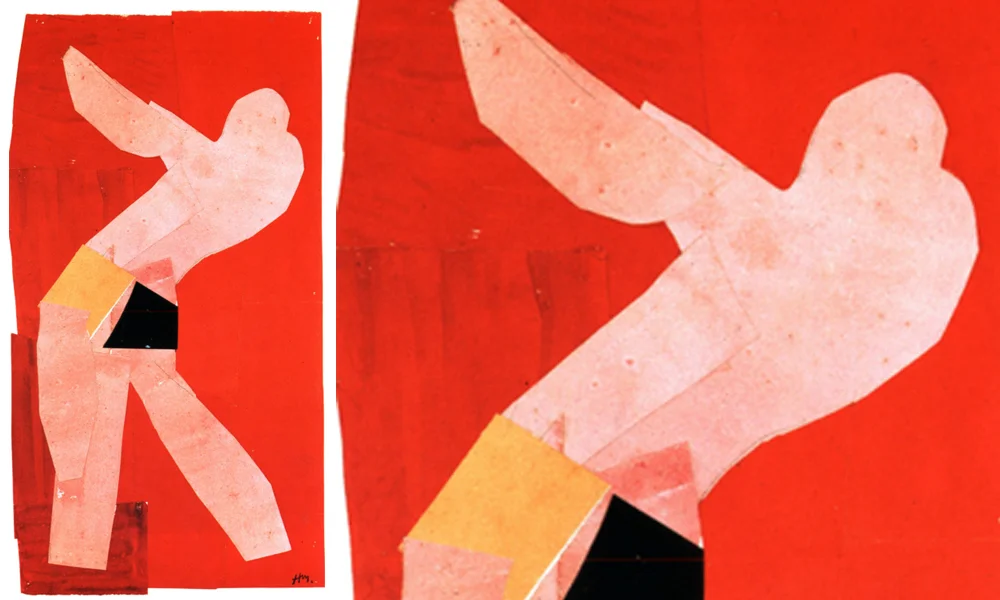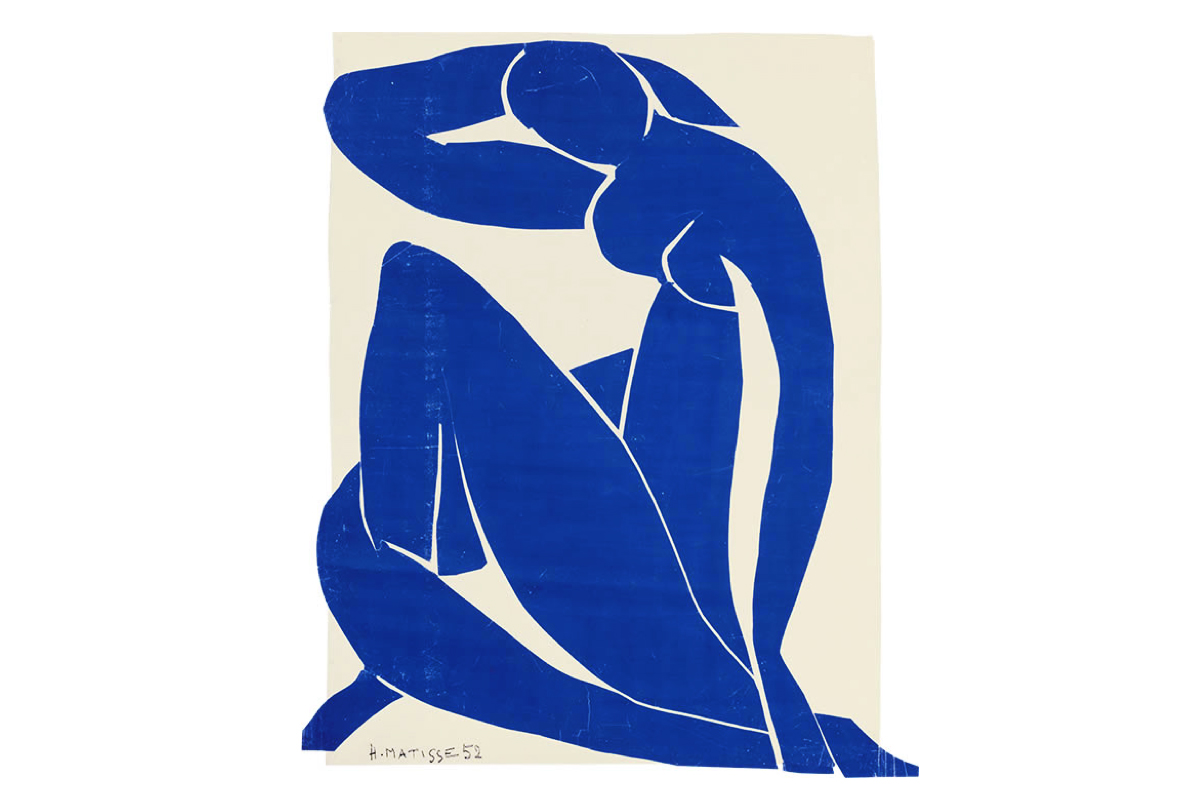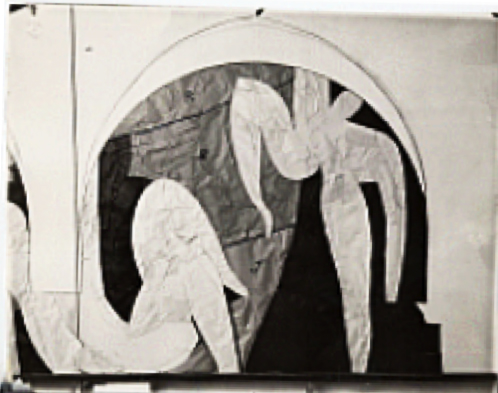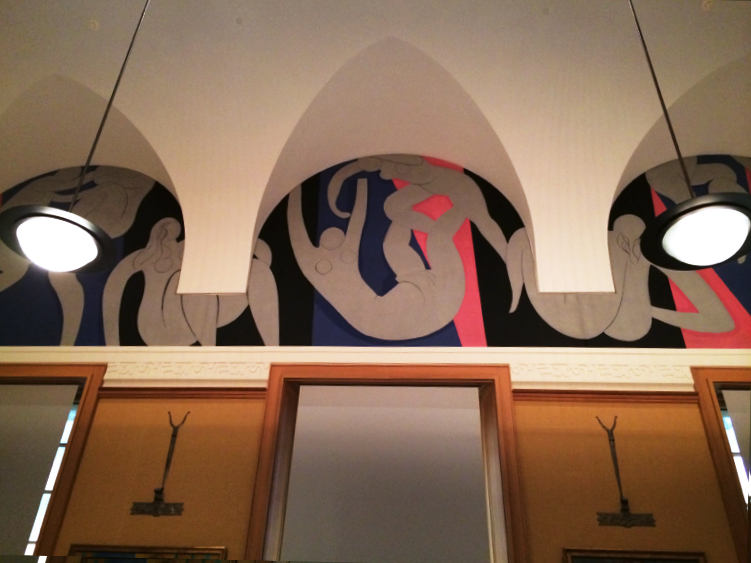




Matisse Cut-outs MoMA
MATISSE
Matisse Cut-outs MoMA
MATISSE
Matisse at MoMA
In MoMA’s introduction to their exhibit, it describes Matisse as“drawing with scissors”, and of “cutting directly into vivid color”. Matisse found a way to resolve what he referred to as "the eternal conflict of drawing and color." The cut outs were his way to draw and color at the same time, which neither drawing nor painting alone can accomplish.
In his book Jazz, Matisse said that to cut right into color makes me think of a sculptor carving into stone.
MoMA’s show leads us through a progression of stages Matisse went through with his early exploration of working with paper as a direct medium.
In Matisse’s early attempts he started the process by drawing the form of his dancers. The figures are ink drawn, but their “frame” was Matisse’s early bold experiment in cut paper

Matisse Paper Cutout
Matisse then took the next step of piecing together various papers of similar colored paper and used them as a means to get the look of a solid color object
Matisse Paper Cutout
Matisse then took the next step of piecing together various papers of similar colored paper and used them as a means to get the look of a solid color object
In this figure of a moving dancer, various layers of cut paper seem to reinforce this flight, whereas the black figure’s body cut from one piece has a steading effect. The black figure denotes stillness and is in contrast to the leaping figure.
The study in black and white for the Barnes mural predates the previous two examples. Because of the large scale of the mural, the outline of the shapes were drawn on the paper. The shapes would then be cut and pinned to a giant canvas by an assistant and tweaked by re-cutting rather than having to re-paint.
Here is a link to an article on the relationship between Barnes, the benefactor who commissioned the mural and Matisse. It is an insight into Matisse's creative process.
These cut outs below were used as a preliminary sketch that would later be used as the basis to execute the murals on site in gauche. In this early study of cut-outs he freely draw onto the paper to augment the shapes:
Rouge et Noir 1938 (the Making of Markova)

Fond vert
In this evolution of his experimentation, Matisse cut out the surrounding area and then placed a different colored paper behind it before he achieved the fluidity of cutting his form directly into the paper. He later likened his cutting to his hands taking flight.
The work looks effortless but he painstakingly tweaked his placement of color cut outs. His assistant Lydia said of his work, "he spent a lot of time looking at the work, he reflected, looking for a possibility to express himself."
Fond vert
In this evolution of his experimentation, Matisse cut out the surrounding area and then placed a different colored paper behind it before he achieved the fluidity of cutting his form directly into the paper. He later likened his cutting to his hands taking flight.
The work looks effortless but he painstakingly tweaked his placement of color cut outs. His assistant Lydia said of his work, "he spent a lot of time looking at the work, he reflected, looking for a possibility to express himself."
The fluidity of cutting the shape from on piece of paper evolved into something magical
The cut-outs speak for themselves. When he needed to see how these cutouts would translate into a printed book called Jazz, he would laboriously trace and cut out each shape, making a stencil and fill it with gauche. The cut out was no longer the substitute for art, it became the means. And in this role reversal gauche became the substitute.

henri matisse blue nude
Matisse stated the white background (another example of MA) was just as important as the form. Here he seems to move his blue pieces ever so slightly. Giving the white a chance to balance the form.
There is a significant progression in the cutouts from not just becoming but to being the ‘end’. They went from aiding him to execute a mural to being a stand alone expression.
henri matisse blue nude
Matisse stated the white background (another example of MA) was just as important as the form. Here he seems to move his blue pieces ever so slightly. Giving the white a chance to balance the form.
There is a significant progression in the cutouts from not just becoming but to being the ‘end’. They went from aiding him to execute a mural to being a stand alone expression.


